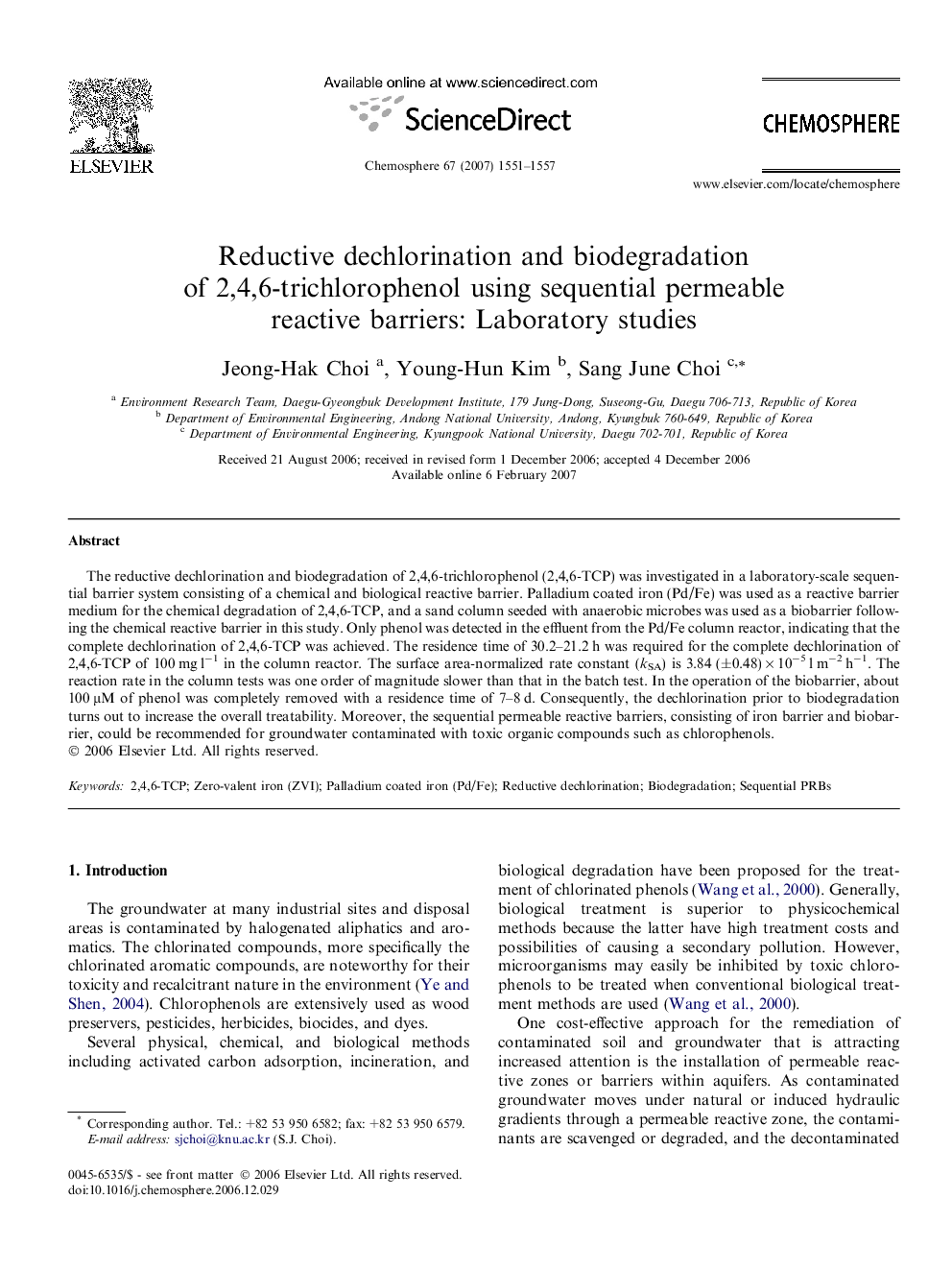| کد مقاله | کد نشریه | سال انتشار | مقاله انگلیسی | نسخه تمام متن |
|---|---|---|---|---|
| 4415848 | 1307761 | 2007 | 7 صفحه PDF | دانلود رایگان |

The reductive dechlorination and biodegradation of 2,4,6-trichlorophenol (2,4,6-TCP) was investigated in a laboratory-scale sequential barrier system consisting of a chemical and biological reactive barrier. Palladium coated iron (Pd/Fe) was used as a reactive barrier medium for the chemical degradation of 2,4,6-TCP, and a sand column seeded with anaerobic microbes was used as a biobarrier following the chemical reactive barrier in this study. Only phenol was detected in the effluent from the Pd/Fe column reactor, indicating that the complete dechlorination of 2,4,6-TCP was achieved. The residence time of 30.2–21.2 h was required for the complete dechlorination of 2,4,6-TCP of 100 mg l−1 in the column reactor. The surface area-normalized rate constant (kSA) is 3.84 (±0.48) × 10−5 l m−2 h−1. The reaction rate in the column tests was one order of magnitude slower than that in the batch test. In the operation of the biobarrier, about 100 μM of phenol was completely removed with a residence time of 7–8 d. Consequently, the dechlorination prior to biodegradation turns out to increase the overall treatability. Moreover, the sequential permeable reactive barriers, consisting of iron barrier and biobarrier, could be recommended for groundwater contaminated with toxic organic compounds such as chlorophenols.
Journal: Chemosphere - Volume 67, Issue 8, April 2007, Pages 1551–1557